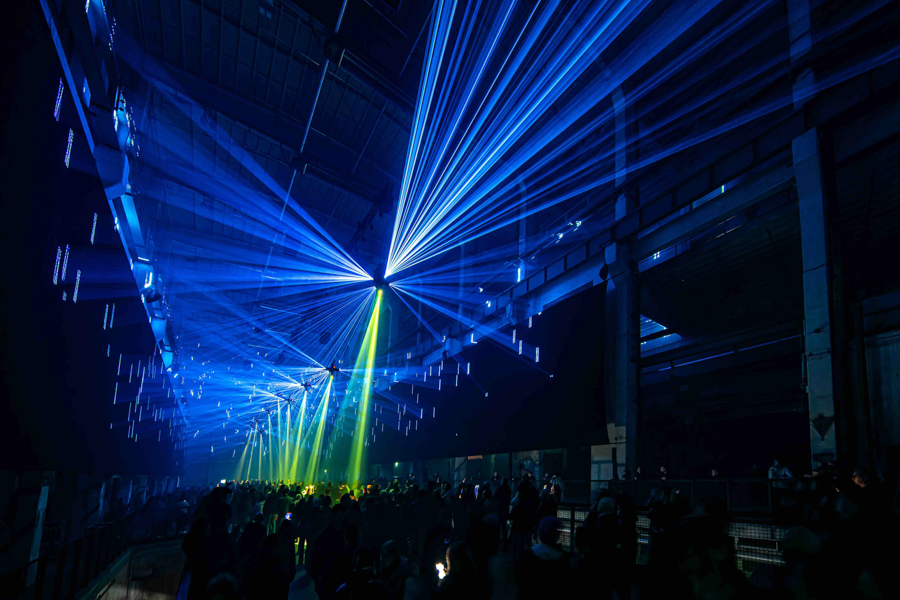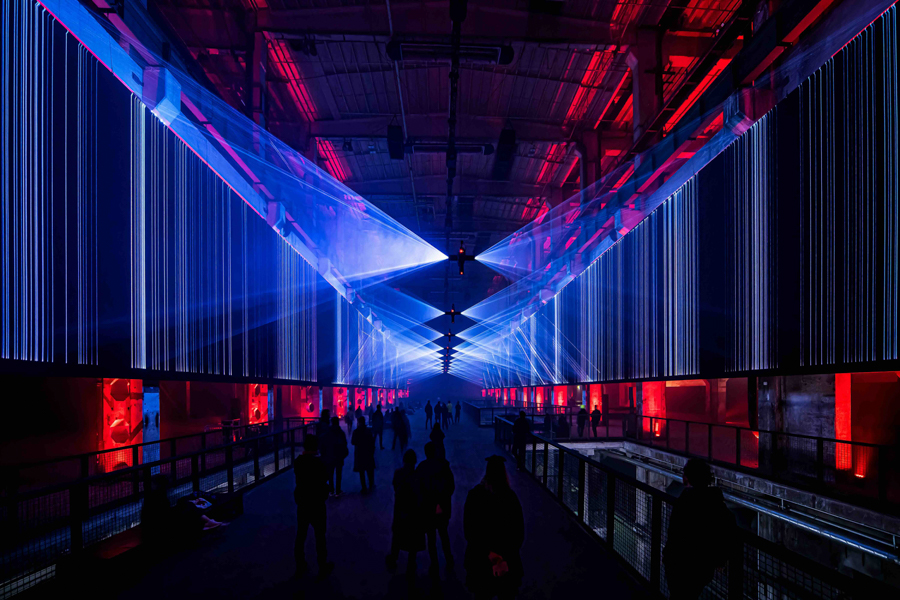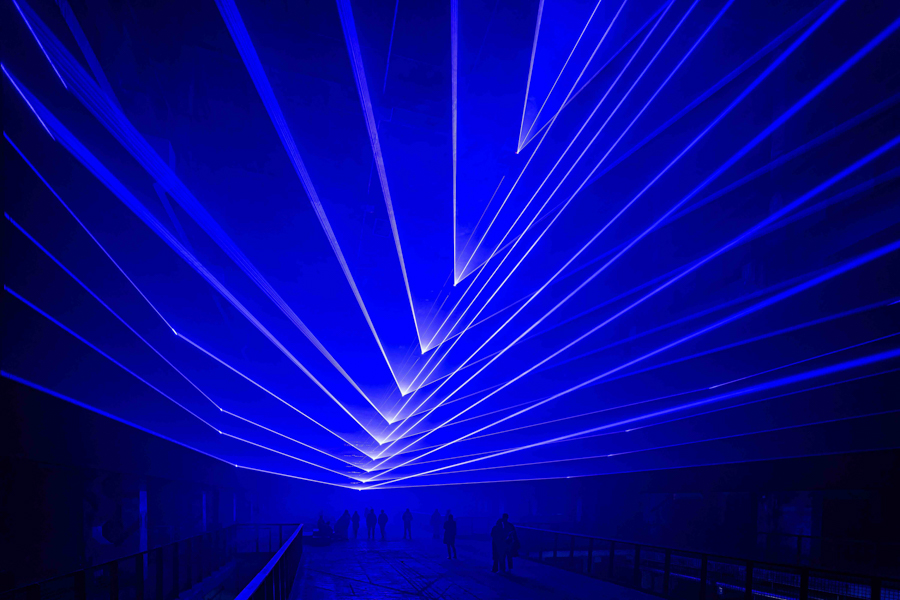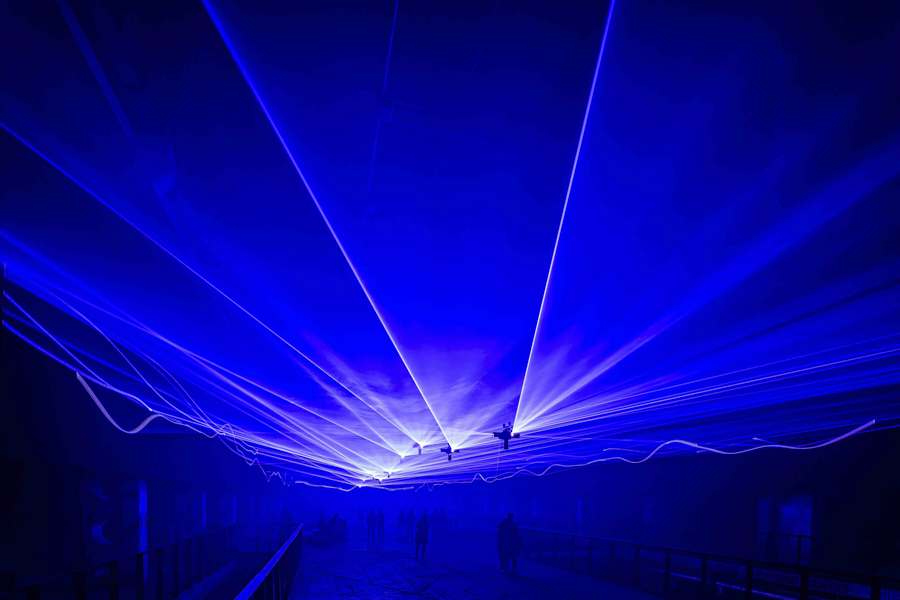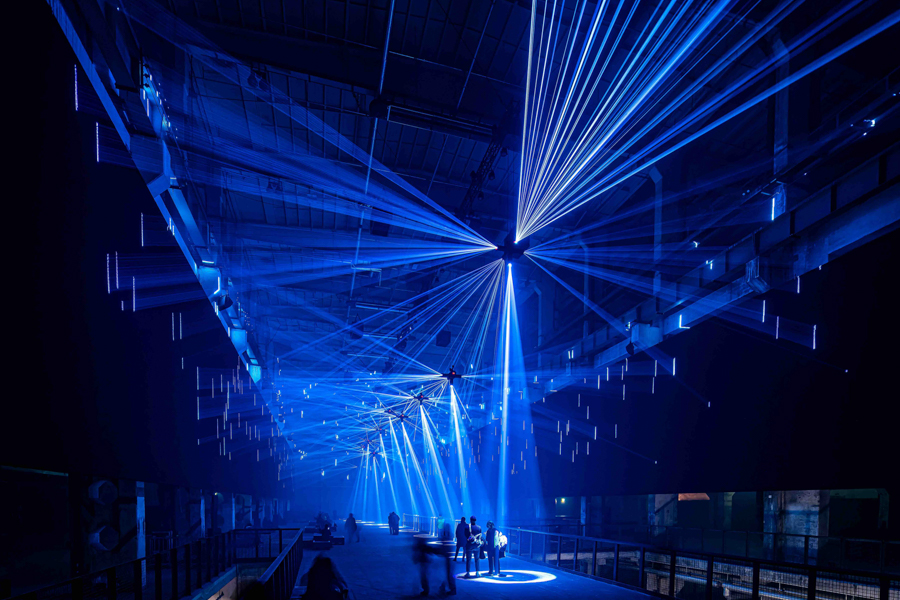German light artist, Christopher Bauder, has chosen MDG ATMe haze generators and Me2 fog machines as the foundation of his latest installation, Vektor, a personal piece loosely based on his life experiences.
Vektor, Memories in Light & Sound, is Bauder’s third installation at Berlin’s Kraftwerk, an old power plant-turned-art gallery in Berlin that Bauder refers to as an ‘industrial cathedral’.
The abstract work is a personal ‘memory chest’ using small audio snippets of memories from Bauder’s childhood through to present day: the sound of the sea from his childhood living on an island in the North Sea, church bells on a Sunday, laughter of loved ones, as well as samples recorded from the Kraftwerk building itself.
The recordings can be precisely targeted throughout the building, transforming the building itself into a living, breathing work through sound and illumination. “The audience doesn’t need to understand the thoughts behind it, or be aware of the massive amount of technology behind it, but I hope they will catch glimpses of the references here and there,” says Bauder.
The new artwork consists of 50 lasers mounted on 10 evenly spaced, heavy-lift winches specifically developed by Kinetic Lights which synchronise movement of all the lasers. These enable Bauder to create a sculpture in mid air that fills the whole volume of the enormous exhibition space.
“It’s important for me to start from symmetry that allows me to break it later,” he explains. “By starting with a very symmetrical layout I am able to create completely random shapes and spacing in the second stage of the creative process. If your initial layout already creates a shape, then you are always bound to that shape and can never break away from it.
“I use the lasers to create three-dimensional shapes and textures that I hope will evoke a memory and an emotional response within the viewers. I like to play with these things, taking a step further to tell a story by very abstract means, and encourage the audience to create their own picture, rather than just showing shapes synchronised to music.
For example, in Vektor, I have an ‘under water’ scene where I play sounds of the ocean with birds flying over, and have created a surface with the lasers in blue with bobbing lights reminiscent of floating buoys. This combination immediately makes everyone think about the sea and an underwater scene, but it is just technology triggering their memory of it. It’s an emotional and poetic show.”
As with any light show, a basis of good haze is of paramount importance to reveal the work of the artist to its full extent, and Bauder states that he uses MDG hazer generators and fog machines whenever possible to create the ‘right’ atmosphere for his pieces.
“The visibility of the light is important as I use light in an architectural sense, like a material that I can shape and form in space into a tangible form that almost feels touchable. At the same time, of course, the light is intangible, not physical, so I need the haze as a basis to materialise the light in space.
“When looking for the perfect haze there are two aspects to take into consideration, translucence and visibility. If I have a lot of haze I have good visibility of the lasers in close proximity, but it obstructs the view of the lasers that are further away.
So the quantity of the haze is extremely important, but also the quality: the quality needs to be translucent enough to keep the whole piece visible across the full 100m distance. I still need to be able to see the back of the space, but at the same time give enough texture in the air to create the visibility of those lasers.
“It’s a really fine balance between the two, and MDG haze delivers that balance. The key factor is the fineness of the droplets in the air which defines the visibility throughout the space. It mainly just reacts to, and refracts, the light without obstructing visibility. That’s why I always try to use MDG haze generators as they provide both these aspects.”
Kraftwerk’s exhibition space is a massive 100m x 60m x 25m high, naturally dark, indoor space on two levels. “The volume is huge,” says Bauder, “but we have just 2 MDG ATMe hazer generators, and 2 Me2 fog machines running at intervals, to fill the whole space.”
The two ATMes are located at each end of the hall, and the two Me2 fog machines in opposite corners. “At the start of the day we run the Me2 fog machines for about 10-15 minutes to quickly fill the space and introduce enough texture.
Then we have the ATMes running on 100% for the rest of the day, with two of MDG theFAN™ to aid circulation, which keep the stability of the amount of haze for the rest of the day and maintain the visibility. Even running at 100% we only use about 20% of the fluid and gas compared to the systems we’ve used in the past.”
Each MDG ATMe, with theFAN™, is housed with gas and fluid in purpose-built MDG Vertical Flight Cases for convenience, storage and transportability. The supplier was cast C. Adolph & RST Distribution, MDG’s exclusive distributor for Germany. “Cast are super, we love them,” concludes Bauder. “They are always ready to demo products for us and quick to react when we need service or supplies. We have a great relationship with them.”
The Berlin art scene has a notably discerning audience but VEKTOR has received an overwhelming response. Four live shows are planned for 15 March and 5 April with music written by Bauder for the first time. “We didn’t know what to expect, but from the start it was crazy – 6500 people on the first weekend and 30,000 in the first four weeks!” says Bauder.
Vektor runs at Berlin’s Kraftwerk from 1 February – 7 April, with the first live show on 15 March 2024.
For more information on MDG haze, fog and low fog products, visit www.mdgfog.com
For more information on Christopher Bauder and Vektor visit the Vektor Art website



